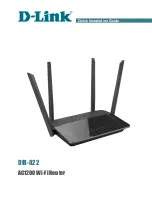
-4-
v7.0
Introduction
1. Introduction
This guide explains the RFID/NFC module features and functions. This product was designed for Waspmote v12 and continues
with no changes for Waspmote v15. There are no great variations in this library for our new product lines Waspmote v15, released
on October 2016.
Anyway, if you are using previous versions of our products, please use the corresponding guides, available on our
Development
website.
You can get more information about the generation change on the document “
New generation of Libelium product lines
”.
1.1. The standard
RFID (Radio Frequency Identification) is a technology that uses electromagnetic fields to identify objects in a contactless way; it
is also called proximity identification. There are 2 elements in RFID communications: the RFID module (or reader/writer device)
and an RFID card (or tag). The RFID module acts as the master and the card acts as the slave; this means the module queries the
card and sends instructions to it. In a normal RFID communication, the RFID module is fixed and the user takes his card near it
when he needs to start the interaction.
Figure : Waspmote with RFID/NFC module on socket 0 (below antenna) and ZigBee radio on socket 1
An RFID card can be understood as a remote storage unit where we can read and write information without contact. Most of the
RFID tags are passive, which implies that the RFID module must create an electromagnetic field in order to power the tag. The
RFID card’s antenna (in fact it is an inductive coupler) gets the power from this field. Also, an RFID card has a very basic micro-
controller which manages the communications and memory access.
Many RFID standards have been released by the industry. Most of them have as operating frequency 13.56 MHz or 125 kHz. In
the present document we will be explaining the RFID/NFC module, which works at 13.56 MHz.
In particular, Libelium has created an ISO/IEC 14443-A and NFC compliant module for Waspmote. The ISO/IEC 14443-A protocol
is widely accepted as the
de facto
RFID at 13.56 MHz standard. Billions of ISO/IEC14443-A cards have been sold over the world.
NFC (Near Field Communication) is an extension of RFID which focuses on communications between smartphones and other
advanced devices. NFC is a set of standards based on previous RFID protocols like ISO/IEC 14443-A.
There are basically 3 ways to interact with an RFID card; Libelium’s RFID/NFC module allows the developer to implement the 3 of them:
1. the RFID/NFC module reads the RFID card’s unique identification (UID)
2. the RFID/NFC module reads the RFID card’s internal memory (16 bytes each time)
3. the RFID/NFC module writes in the RFID card’s internal memory (16 bytes each time)





































